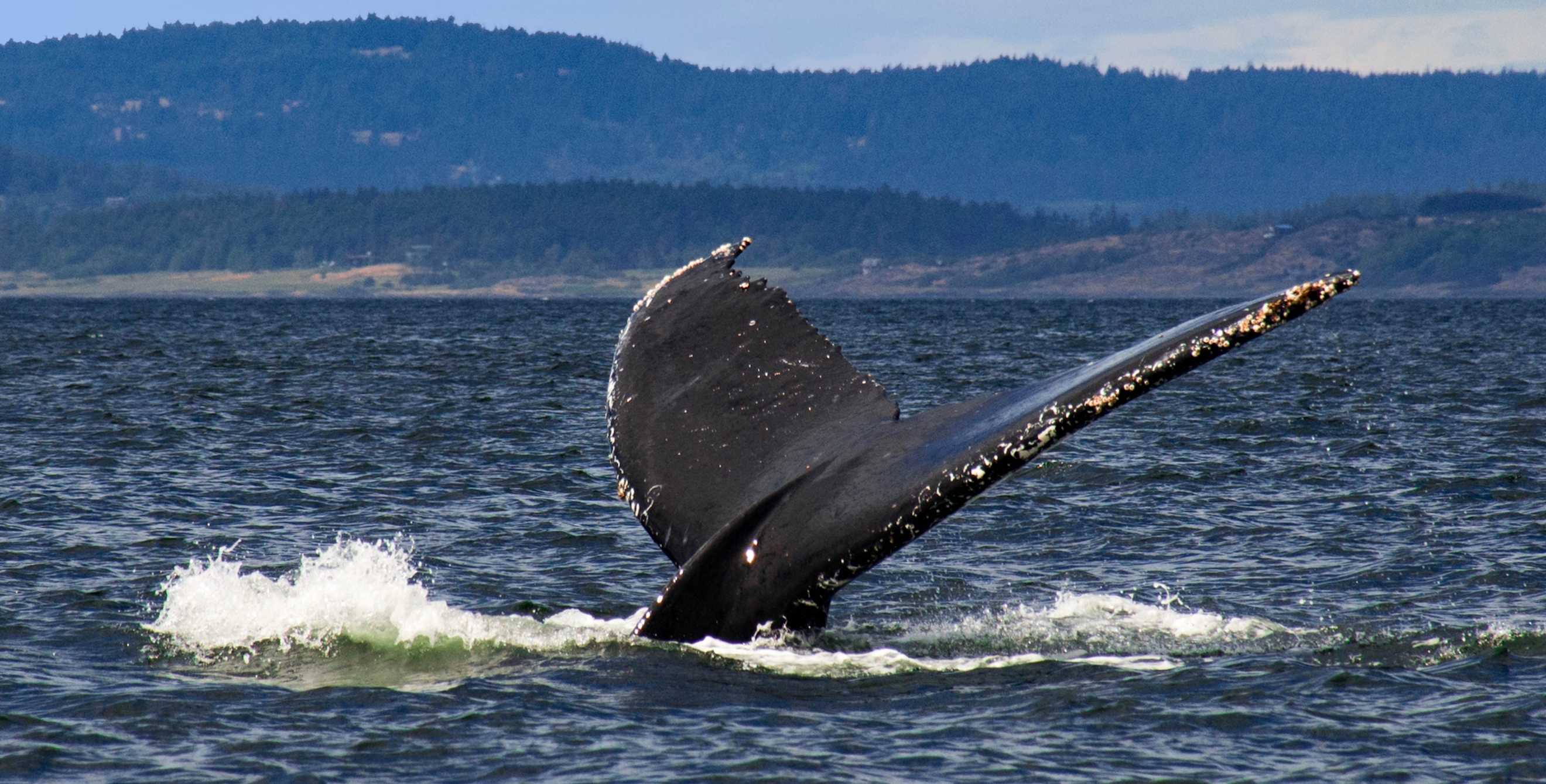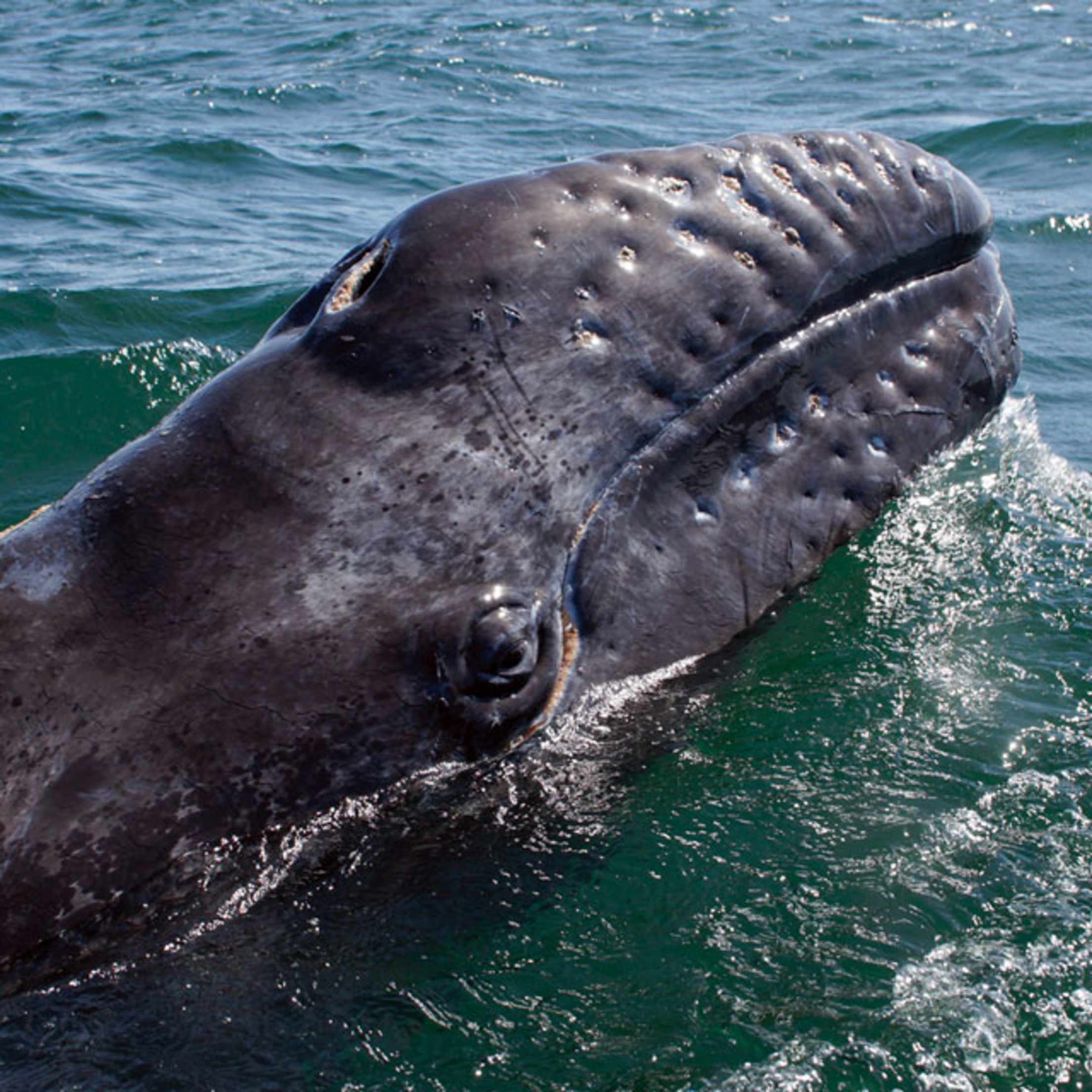
Whale Watching in the West
Know when and where to encounter the West Coast’s most impressive creatures.

One summer, off Washington’s San Juan Islands, Hans Bruning watched three extended families of orcas—dozens of whales—meet near his kayak. “It was like Fourth of July,” he says. “They were breaching, slapping their tails, the works!” It was a special sight even for Bruning, a naturalist guide and boat captain who helps researchers study the mighty mammals up and down the Pacific Coast. But it didn’t make going to work the next day any less exciting. From the desert shores of Mexico’s Baja California north to the glacier-fringed bays of southeast Alaska, every encounter stirs the same emotion, he says: “Three letters—A, W, E.”
February-April
Whalers of the 19th century considered gray whales ferocious “devilfish,” and hunted them nearly to extinction along the North American coast. Now gray whales are known for their inquisitiveness toward humans, and their populations rebounded under federal protection; today they number close to 18,000. Visitors to San Ignacio Lagoon in Baja see their gentle side in one of the most intimate whale-watching experiences on the planet: Gazing, from just inches away, into the eyes of a mother gray and her newborn calf. These friendlies, as they’ve come to be called, have been known to nuzzle boats and venture close enough for a kind pat, which is legal in Mexico. No one knows why these whales, which can grow up to 50 feet long and weigh 40 tons, seek human contact. Carrie Newell, a marine biologist who studies this population’s behaviors, suggests the animals may be using the boatloads of people as babysitters, trusting them to benignly distract or entertain a calf while the mother rests or feeds nearby.
Locals say only about 10 to 15 percent of the several hundred whales that winter and give birth here actively seek human touch. Many more of the giants, which feed by straining bay mud for krill and plankton, perform acrobatic breaches and push their heads straight up out of the water for a look around, an activity dubbed spy hopping.
May-September
Three pods of orcas make the Salish Sea between Washington’s San Juan Islands and Victoria, British Columbia, their home. Summertime offers the best weather for taking to the water to watch the sleek and sharp-toothed creatures. Each population contains multiple tightly knit pods, organized by maternal kinship, that share in calf rearing. The pods use slightly different dialects of whistles and squeaks that can be heard underwater for miles. When pods meet, they line up facing one another, then mix together in a greeting ceremony, a flurry of full-body leaps, friendly tail slaps, and spy hops.
Other small groups of orcas who migrate through the region—known as transients—use a very different vernacular, stick to themselves, and tend to feast on seals and other mammals, whereas the residents feed mainly on salmon. The Whale Museum in Friday Harbor on San Juan Island displays full orca skeletons and details on migration, language, and behaviors as well as offering gossip about clan relationships.
June-August
Deeper than the Grand Canyon, the undersea Monterey Canyon near Moss Landing, California, channels an upwelling of cold water rich in anchovies and krill that feeds whales year-round. Humpbacks, grays, orcas, and minkes are just a few of the species found here, along with gregarious pods of Risso’s dolphins—blunt-nosed, fearless squid eaters who regularly cut through the offshore swells in leaping groups of several dozen or more.
But perhaps the best reason to whale-watch in Monterey Bay is the chance to see blue whales, the largest animals ever to live on earth. These behemoths top out at 400,000 pounds, and for the summer they come here to eat. Each one gulps as much as six tons of krill a day, using a pleated throat that expands like an apron to scoop up the tiny shrimp and then filtering them from the water through sievelike baleen. Visitors locate them from afar by looking for the telltale spouts, which gush like geysers as high as 30 feet. Up close, the slope of a diving blue’s back seems to go on and on before ending in a 25-foot-wide tail known as a fluke.

A gray whale crests a wave in Baja California.
June-September
At Glacier Bay in Alaska, blue-white icebergs and snowcapped mountains ring the shimmering azure water. Such outsize scenery deserves outsize personalities, and the humpback whales that come to feed here through early fall more than deliver. They throw their bodies into the air, slap the sea with powerful flukes, and use their long, agile pectoral fins to swim backward or stop on a dime. The whales’ haunting songs carry to the water’s surface.
Their most astonishing behavior may be what researchers call cooperative bubble net feeding. As a school of prey courses through the water, two or more humpbacks dive below the swarm and then quickly spiral upward, expelling powerful jets of bubbles and emitting loud feeding calls that corral bewildered fish into a concentrated frenzy. The same whales then chase the fish to the surface, scooping them up with gaping mouths. Crashing through the water line, the humpbacks’ heads bob together like a giant bowlful of black mussels.
August-September
Nearly all gray whales make a 12,000-mile round-trip migration each year from their winter mating spots along the coast of Baja California to summer feeding grounds in the Bering and Chukchi seas, west of Alaska. About 200 of Baja’s grays, however, spend the feeding season on Oregon’s central coast near Depoe Bay, Oregon. It’s illegal to touch these animals in U.S. waters. But some of the whales will spy hop and breach very close to boats and the forested shore, just beyond the breakers or outside the harbor mouth, says Newell, the researcher, who also runs a whale-watching business here. It’s the best place in the country to get up close and personal with whales, and clear skies and calm seas make late summer and early fall the most pleasant time to get out on the water.
The area is also a good place to learn about whales. Perched on the seawall above the harbor, Depoe Bay Whale Watching Center offers ranger talks and picture-window views of whales frolicking in the harbor. Nearby, Newell's Whale, Sea Life & Shark Museum displays baleen, a narwhal tusk, and the snaggletoothed jaws of more than a dozen different shark species.
Boat Tips
- Dress warmly and in layers, and wear a well-secured hat. Even sunny days can be cool on the water, and the best viewing spot is sometimes also the wettest.
- Sunglasses with polarized lenses help cut glare off the water.
- Ginger-flavored gum, candy, and tea can help tame nausea. If you take motion sickness pills, consider starting with one the night before and taking another at breakfast the morning you head out.
- Stay outside, no matter how cozy the cabin. Inside, you’re more likely to miss the whales and get seasick.
- Bring binoculars, but scan the horizon with naked eyes first to spot a spout. Binoculars and cameras are best saved for close-ups.